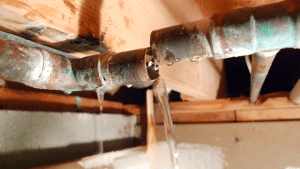Find Out Effective Ways to Identify Concealed Leaking Water Lines
Find Out Effective Ways to Identify Concealed Leaking Water Lines
Blog Article
We've discovered this article on Locating water leaks directly below on the internet and felt it made perfect sense to write about it with you on this page.
.jpg)
Early detection of leaking water lines can alleviate a possible disaster. Some tiny water leaks may not be noticeable.
1. Check Out the Water Meter
Every house has a water meter. Checking it is a guaranteed manner in which aids you uncover leaks. For starters, turn off all the water sources. Guarantee nobody will certainly purge, make use of the tap, shower, run the cleaning machine or dishwasher. From there, go to the meter and also watch if it will alter. Considering that no person is utilizing it, there need to be no activities. If it moves, that indicates a fast-moving leakage. If you spot no changes, wait an hour or two and check back once more. This suggests you might have a slow-moving leak that might even be underground.
2. Inspect Water Consumption
If you find abrupt modifications, despite your consumption being the very same, it implies that you have leaks in your plumbing system. An unexpected spike in your bill shows a fast-moving leak.
A steady boost every month, even with the exact same habits, reveals you have a slow leakage that's also gradually rising. Call a plumber to thoroughly examine your building, particularly if you really feel a warm area on your flooring with piping underneath.
3. Do a Food Coloring Examination
When it comes to water consumption, 30% comes from toilets. If the shade in some way infiltrates your bowl during that time without flushing, there's a leak in between the container and bowl.
4. Asses Outside Lines
Do not neglect to examine your exterior water lines also. Needs to water leak out of the link, you have a loosened rubber gasket. One small leakage can waste loads of water as well as spike your water bill.
5. Assess the scenario and also evaluate
House owners must make it a routine to check under the sink counters and even inside cabinets for any kind of bad odor or mold and mildew development. These two red flags show a leakage so prompt attention is called for. Doing regular assessments, even bi-annually, can save you from a significant issue.
A lot more importantly, if you recognize your residence is already old, keep a watchful eye on your heating systems, tubes, pipes etc. Check for discolorations and also deteriorating as a lot of pipes and appliances have a life expectancy. They will certainly additionally naturally degrade because of wear and tear. Do not wait for it to escalate if you suspect dripping water lines in your plumbing system. Call a professional plumber right away so you do not wind up with a horrible mess in your home.
Early discovery of leaking water lines can minimize a potential catastrophe. Some tiny water leaks might not be noticeable. Checking it is a guaranteed means that assists you uncover leaks. One small leakage can waste lots of water and also spike your water expense.
If you believe leaking water lines in your plumbing system, don't wait for it to rise.
WARNING SIGNS OF WATER LEAKAGE BEHIND THE WALL
PERSISTENT MUSTY ODORS
As water slowly drips from a leaky pipe inside the wall, flooring and sheetrock stay damp and develop an odor similar to wet cardboard. It generates a musty smell that can help you find hidden leaks.
MOLD IN UNUSUAL AREAS
Mold usually grows in wet areas like kitchens, baths and laundry rooms. If you spot the stuff on walls or baseboards in other rooms of the house, it’s a good indicator of undetected water leaks.
STAINS THAT GROW
When mold thrives around a leaky pipe, it sometimes takes hold on the inside surface of the affected wall. A growing stain on otherwise clean sheetrock is often your sign of a hidden plumbing problem.
PEELING OR BUBBLING WALLPAPER / PAINT
This clue is easy to miss in rooms that don’t get much use. When you see wallpaper separating along seams or paint bubbling or flaking off the wall, blame sheetrock that stays wet because of an undetected leak.
BUCKLED CEILINGS AND STAINED FLOORS
If ceilings or floors in bathrooms, kitchens or laundry areas develop structural problems, don’t rule out constant damp inside the walls. Wet sheetrock can affect adjacent framing, flooring and ceilings.
https://www.servicemasterbyzaba.com/blog/how-to-detect-water-leakage-in-walls/

As a serious person who reads about Detecting hidden plumbing leaks, I think sharing that piece of content was necessary. Those who appreciated our article kindly do not forget to pass it around. Many thanks for your time. Visit us again soon.
Urgent plumbing issue? Connect now. Report this page